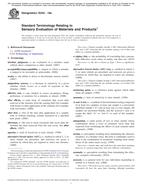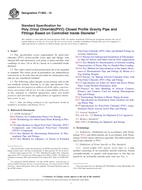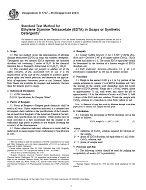1.1 These test methods cover the chemical analysis of carbon steels, low-alloy steels, silicon electrical steels, ingot iron, and wrought iron having chemical compositions within the following limits:
| Element | Concentration Range, % |
| Aluminum | 0.001 to 1.50 |
| Antimony | 0.002 to 0.03 |
| Arsenic | 0.0005 to 0.10 |
| Bismuth | 0.005 to 0.50 |
| Boron | 0.0005 to 0.02 |
| Calcium | 0.0005 to 0.01 |
| Cerium | 0.005 to 0.50 |
| Chromium | 0.005 to 3.99 |
| Cobalt | 0.01 to 0.30 |
| Columbium (Niobium) | 0.002 to 0.20 |
| Copper | 0.005 to 1.50 |
| Lanthanum | 0.001 to 0.30 |
| Lead | 0.001 to 0.50 |
| Manganese | 0.01 to 2.50 |
| Molybdenum | 0.002 to 1.50 |
| Nickel | 0.005 to 5.00 |
| Nitrogen | 0.0005 to 0.04 |
| Oxygen | 0.0001 to 0.03 |
| Phosphorus | 0.001 to 0.25 |
| Selenium | 0.001 to 0.50 |
| Silicon | 0.001 to 5.00 |
| Sulfur | 0.001 to 0.60 |
| Tin | 0.002 to 0.10 |
| Titanium | 0.002 to 0.60 |
| Tungsten | 0.005 to 0.10 |
| Vanadium | 0.005 to 0.50 |
| Zirconium | 0.005 to 0.15 |
1.2 The test methods in this standard are contained in the sections indicated as follows:
| Sections | |
| Aluminum, Total, by the 8-Quinolinol Gravimetric Method (0.20to 1.5 %) | 124-131 |
| Aluminum, Total, by the 8-Quinolinol Photometric Method (0.003to 0.20 %) | 76-86 |
| Aluminum, Total or Acid-Soluble, by the Atomic AbsorptionMethod (0.005 to 0.20 %) | 308-317 |
| Antimony by the Brilliant Green Photometric Method (0.0002 to0.030 %) | 142-151 |
| Bismuth by the Atomic Absorption Method (0.02 to 0.25 %) | 298-307 |
| Boron by the Distillation-Curcumin Photometric Method (0.0003to 0.006 %) | 208-219 |
| Calcium by the Direct-Current Argon Plasma Optical EmissionSpectroscopy Method (0.0005 to 0.010 %) | 289-297 |
| Carbon, Total, by the Combustion Gravimetric Method (0.05 to1.80 %)-Discontinued 1995 | |
| Cerium and Lanthanum by the D-C Plasma Optical EmissionMethod (0.003 to 0.50 % Cerium, 0.001 to 0.30 % Lanthanum) | 249-257 |
| Chromium by the Atomic Absorption Method (0.006 to 1.00 %) | 220-229 |
| Chromium by the Peroxydisulfate Oxidation-Titration Method(0.05 to 3.99 %) | 230-238 |
| Cobalt by the Nitroso-R Salt Photometric Method (0.01 to0.30 %) | 53-62 |
| Copper by the Atomic Absorption Method (0.004 to 0.5 %) | 279-288 |
| Copper by the Neocuproine Photometric Method (0.005 to1.50 %) | 114-123 |
| Lead by the Ion-Exchange-Atomic Absorption Method (0.001 to0.50 %) | 132-141 |
| Manganese by the Atomic Absorption Method (0.005 to 2.0 %) | 269-278 |
| Manganese by the Metaperiodate Photometric Method (0.01 to2.5 %) | |
| Manganese by the Peroxydisulfate-Arsenite Titrimetric Method(0.10 to 2.50 %) | 164-171 |
| Molybdenum by the Thiocyanate Photometric Method (0.01 to1.50 %) | 152-163 |
| Nickel by the Atomic Absorption Method (0.003 to 0.5 %) | 318-327 |
| Nickel by the Dimethylglyoxime Gravimetric Method (0.1 to5.00 %) | 180-187 |
| Nickel by the Ion-Exchange-Atomic-Absorption Method (0.005to 1.00 %) | 188-197 |
| Phosphorus by the Alkalimetric Method (0.02 to 0.25 %) | 172-179 |
| Phosphorus by the Molybdenum Blue Photometric Method (0.003to 0.09 %) | |
| Silicon by the Molybdenum Blue Photometric Method (0.01 to0.06 %) | 103-113 |
| Silicon by the Gravimetric Titration Method (0.01 to 3.5 %) | 46-52 |
| Sulfur by the Combustion-Iodate Titration Method (0.005 to0.03 %) | 37-45 |
| Tin by the Sulfide-Iodometric Titration Method (0.01 to 0.1 %) | 95-102 |
| Tin by the Solvent Extraction-Atomic Absorption Method (0.002to 0.10 %) | 198-207 |
| Titanium, Total, by the Diantipyrylmethane SpectrophotometricMethod (0.025 to 0.30 %) | 258-268 |
| Vanadium by the Atomic Absorption Method (0.006 to 0.15 %) | 239-248 |
1.3 Test methods for the determination of several elements not included in this standard can be found in Test Methods E30 and Test Methods E1019.
1.4 Some of the concentration ranges given in 1.1 are too broad to be covered by a single test method and therefore this standard contains multiple test methods for some elements. The user must select the proper test method by matching the information given in the Scope and Interference sections of each test method with the composition of the alloy to be analyzed.
1.5 The values stated in SI units are to be regarded as standard. In some cases, exceptions allowed in Practice E380 are also used.
1.6 This standard does not purport to address all of the safety concerns, if any, associated with its use. It is the responsibility of the user of this standard to establish appropriate safety and health practices and determine the applicability of regulatory limitations prior to use. Specific hazards statements are given in Section 5 and in special “Warning” paragraphs throughout these test methods.
Product Details
- Published:
- 01/01/2000
- Number of Pages:
- 58
- File Size:
- 1 file , 410 KB


